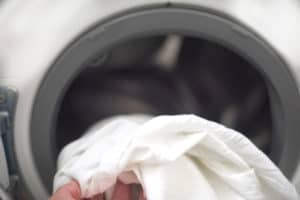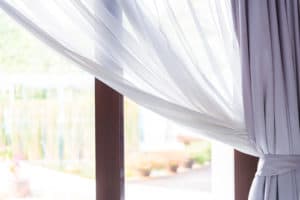Singapore, a geographical location which is fast becoming a renowned tourist attraction site, is a place that is constantly bustling with activities. With the beautiful scenery and the special kind of infrastructures located in this place, like: the Night Safari ( a zoo that basically operates at night, which harbors over 1000 animals) , the man-made waterfalls, the surrounding islands, the never-ending cultural events, the skyscrapers, etc. There is always a new thing to discover; there is always something to always keep your curiosity at its peak, hence, leaving you with no time to focus on other things asides making conscious efforts to relish in the experience of staying there.
To keep up with the pace that this sovereign state compels you to, you have to seek help for basic things, even to the point of outsourcing your household cleaning services. Cleaning is such a chore, I know. Which is why a lot of companies that offer cleaning services abound in Singapore. But critically looking at it, cleaning is something anyone can actually do, all that is needed is the know-how and the tools to produce excellent cleaning results.
The Curtain is one household accessory that is often neglected by house owners when cleaning, probably because they see it as a self-cleansing apparel or just because they never think it actually gets dirty. This is quite laughable because the curtain is one apparel that is usually a shelter of germs, dirt and odor; if kept for a long time without cleaning. Funny enough, curtains are the easiest to clean, you just need to know how to go about it. But before we get to that, let’s briefly discuss the various types of curtains that are ready available.
– Cotton Curtains
This type is synthetically made from cotton. It is the commonly used curtain fabric in households because of its quality, affordability and availability. There are variants of this type: the thick ones and the sheer ones. Cotton Curtains are preferably dry cleaned.
– Silk Curtains
This type of curtain fabric have a characteristic “shine” to it, making it not too receptive of natural sunlight because it could damage it. It is a heavier type compared to the cotton curtains. It is typically cleaned by dry-cleaning.
– Linen Curtain Fabric
Linen is a lighter fabric that have the retro feel to it when seen and felt. It is typically cleaned by dry-cleaning too.
– Velvet Curtains
This is the thickest variant of the curtains on our list. Its thickness makes it ideal to act as a warming agent to a room when it is cold, shut out noise and also help to maintain low sunlight in the room, hence, providing a sense of privacy.
– Lace Curtains
This have got to be the lightest curtain fabric on our list. It is produced in such a way that makes it possible for light to pass through it and allows for proper aeration in the room. It is quite easy to clean but too much coercion or application of force on the fabric could cause formation of creases or even tear in worse case scenarios.
Now that we have familiarized ourselves with the various types of curtains that are readily available, let’s discuss the Dos and Don’ts of cleaning curtains.
The Dos
If you can, always brush your curtains from time to time. This should be done to all types but the degree of force applied should be considerate of the type of fabric in question. Brushing the fabric regularly keeps the fabric clean always and also saves the stress of bring down the drapes for thorough cleaning every time.
When removing the curtains before washing be sure to remove any hooks and weights attached to it.
The first step after taking out the curtains is to dust the curtains properly; this could be done by shaking it out or by using brush attachments.
You can make use of household detergents for cleaning; just be sure it’s not too corrosive.
If there is need for ironing, to smoothen out edges, iron the curtain when it is damp preferably.
Also ensure the seams are stretched while ironing to avoid the formation of creases on the curtain.
When the curtain is dry and ironed to taste, ensure it is properly stretched.
Hang the curtains when you are satisfied it looks clean, dry and presentable enough.
The Don’ts
Before washing know the type of material and follow precautions when washing the curtains. For light and delicate curtain fabrics, do not use steam cleaners and dryers on them, since excess heat could damage it. Also, do not wash heavy fabrics by hands because it will be difficult to dry it out; thus, it is better to clean with steam cleaners since it facilitates it drying faster and its resistant to heat is also a plus.
When washing light fabrics by hands, do not agitate it ferociously, so it doesn’t stand the risk of tear eventually.
For curtains that are suitable to be cleaned in a washing machine, do not overload it. It is essential not to overload it for maximum cleaning effect.
Do not iron a curtain when dry, especially the light and delicate ones, they stand the risk of burning if care is not taken.
Avoid ironing silk curtains at high heat, they have a higher propensity of burning when subjected to extreme thermal conditions.
Be mindful of the fabrics you sundry, some delicate materials like silk will shrink when sundried for long hours. Hence; the need of them being dried mechanically at a very low heat.
Restrain from using harsh washing agents like bleaches on curtains; it could make the designs and the colors on the fabric to fade easily.
Curtain Cleaning at this point shouldn’t be underrated; because there are quite a number of allergens, and germs sticking to the fabric – which might not be visible – but are there and very much detrimental to our health; because of how it tampers with the quality of the air we breathe. You also can’t deny that there is something about a clean environment that is aesthetically appealing and gives one this sense of control over the happenings in his/her surroundings. Follow the cleaning tips and disclaimers discussed here and ensure your curtains are always in an immaculate and good condition.


